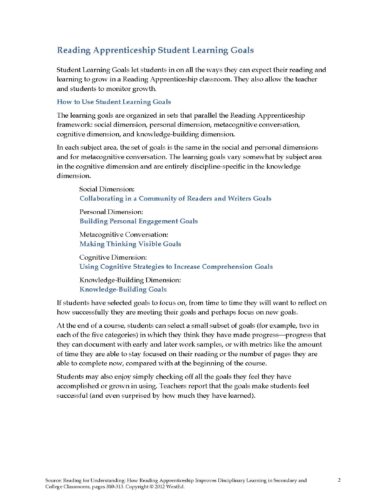Student Learning Goals let students in on all the ways they can expect their reading and learning to grow in a Reading Apprenticeship classroom. They also allow the teacher and students to monitor growth. The learning goals are organized in sets that parallel the Reading Apprenticeship framework: social dimension, personal dimension, metacognitive conversation, cognitive dimension, and knowledge-building dimension. In each subject area, the set of goals is the same in the social and personal dimensions and for metacognitive conversation.
The learning goals vary somewhat by subject area in the cognitive dimension and are entirely discipline-specific in the knowledge dimension. This resource provides Student Learning Goals for literature.

